Lord Foster's design — with statues, pathways and a translucent bridge — chosen as the Queen Elizabeth II National Memorial in St James's Park
Norman Foster's design, created with the artist Yinka Shonibare and the landscape designer Michel Desvigne Paysagiste, has been chosen as the permanent memorial to Queen Elizabeth II.


The Foster + Partners design with Yinka Shonibare and Michel Desvigne Paysagiste was announced as the winner after a six-week public consultation looking at five shortlisted proposals for a permanent national memorial to the late Queen Elizabeth.
The eyecatching centrepiece of the memorial is the translucent Unity Bridge, but it's an ambitious plan than completely reimagines a huge swathe of St James’s Park, which will feature sculptures of Queen Elizabeth II and Prince Philip, a relocated Marlborough Gate, and an entirely new 'Prince Philip Gate' entrance.
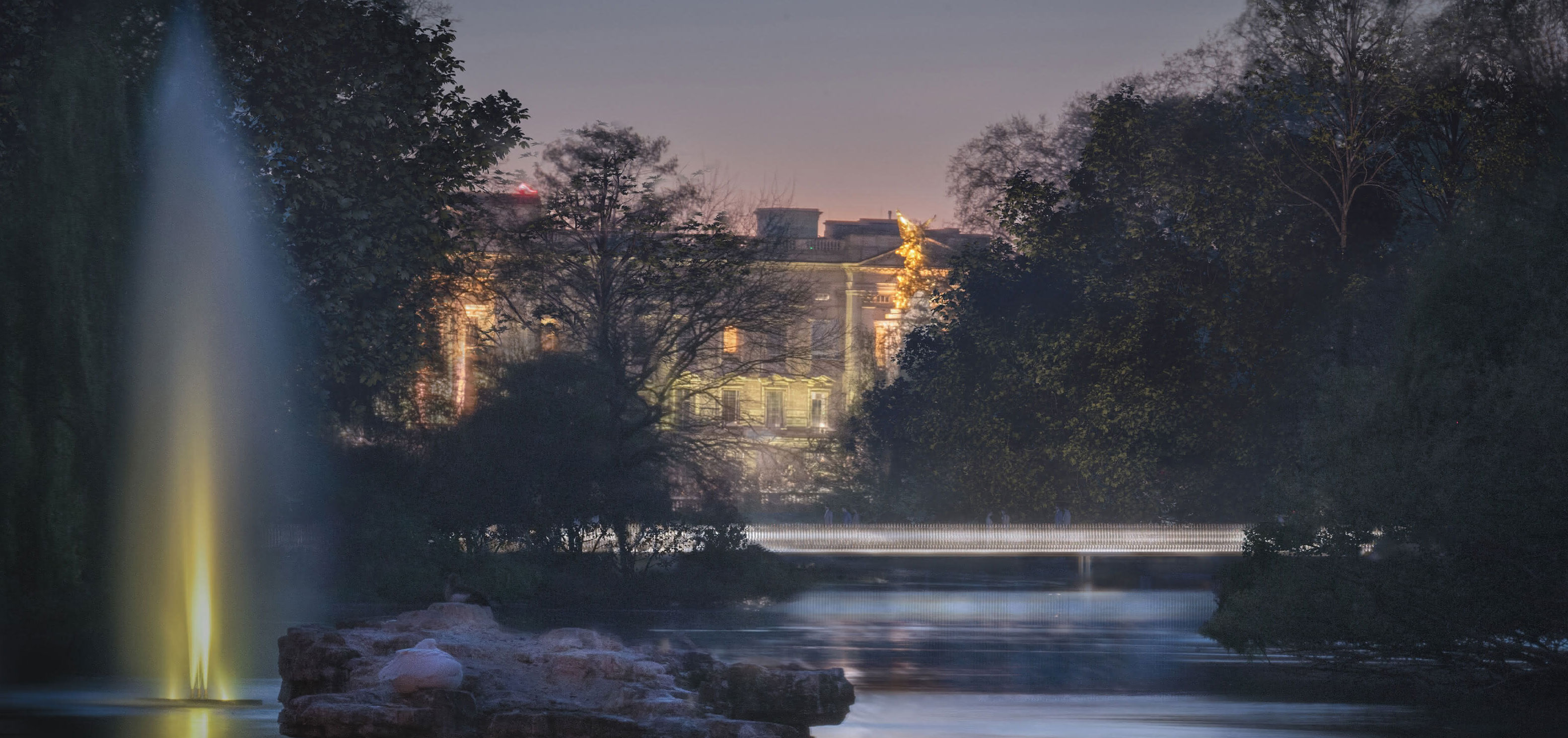
The park, which sits between Buckingham Palace and Westminster Abbey in the heart of Central London, was originally designed in 1820 by the architect John Nash. While the winning design embraces the tranquil calm of the original — with a natural tesselated path weaving through the trees — many of the elements introduced by Foster, Shonibare and Paysagiste are very much 21st century.
'The Commonwealth Garden and Yinka Shonibare’s Wind Sculpture define a space for reflection and shared experience,' read the notes on the winning design. 'The Community Garden’s artistic installations celebrate the diversity of the United Kingdom; and the Unity Bridge is a jewel crowning the path and Memorial journey.'
The elements on show are more than just visual, howver:
'Throughout, the Queen’s voice is ever present through audio installations and inscriptions, alongside an ever-evolving digital conservatory, accessible from the site, or anywhere in the world,' the notes conclude.

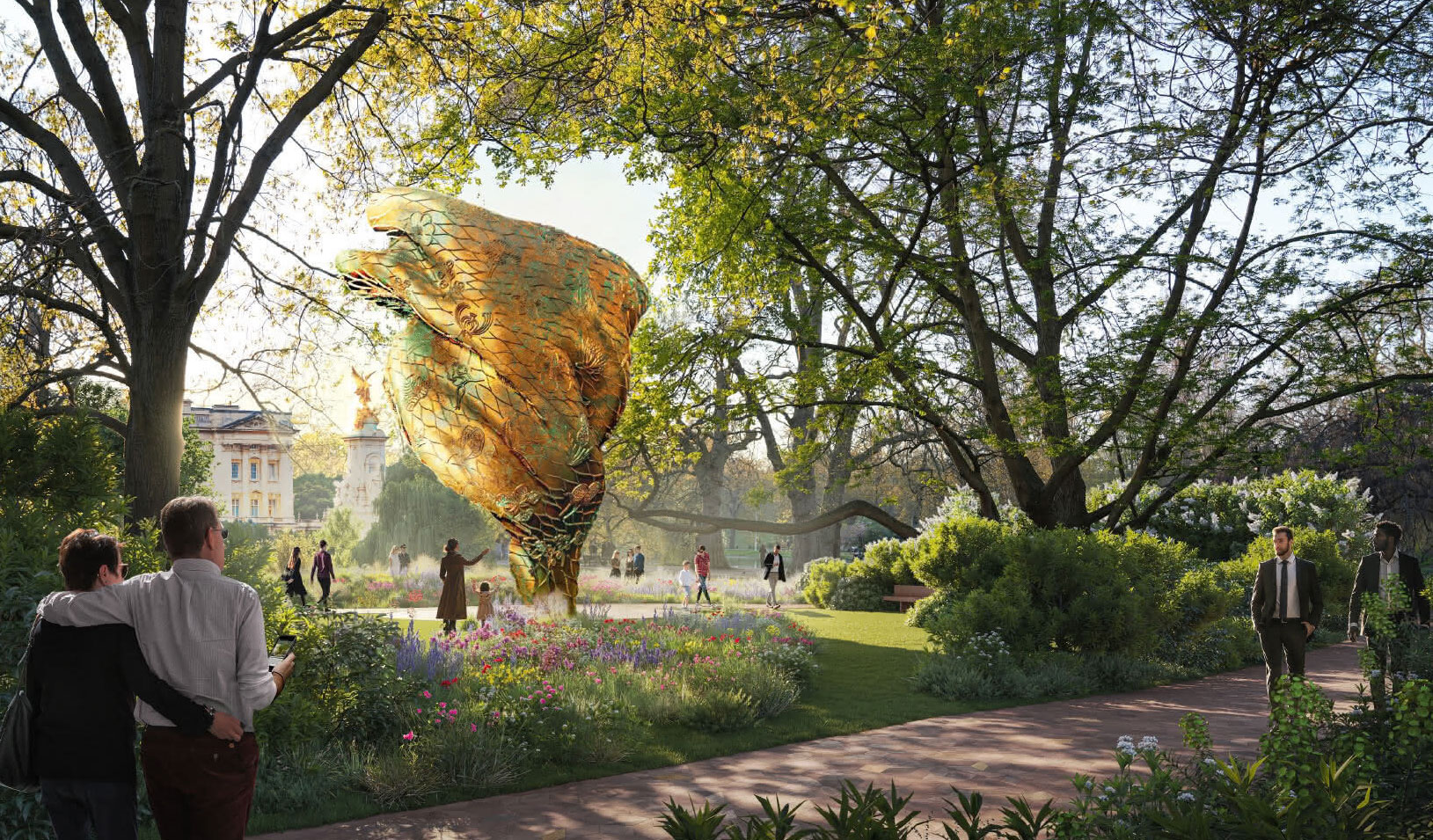

All five of the entrants chose the lake — a remnant of the lost River Tyburn — as a focal point of the work, which has a budget of between £23 million and £46 million.
Exquisite houses, the beauty of Nature, and how to get the most from your life, straight to your inbox.
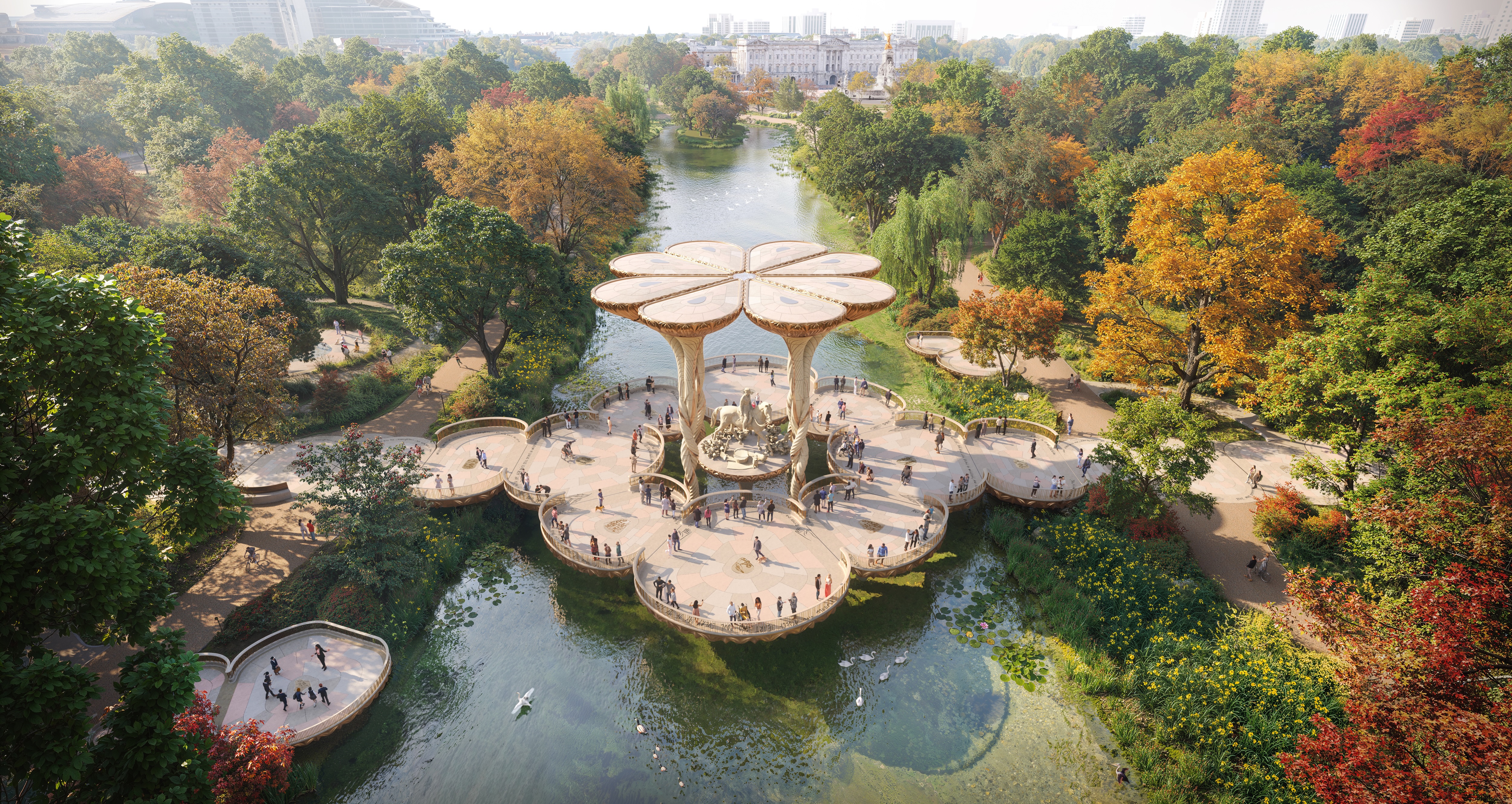
Tom Stuart-Smith National Monument design for Queen Elizabeth II
One proposal, from Heatherwick Studio (above; with Halima Cassell, MRG Studio, Webb Yates and Arup), incorporated a Memorial Walk and a 'Bridge of Togetherness' made from 70 giant, limestone lilypads (one for each year of the Queen’s reign), with a statue in the middle beneath a canopy of eight sculptural lilies. It was perhaps the most flamboyant option, and attractive, even if it might have made St James’s Park look like Singapore.
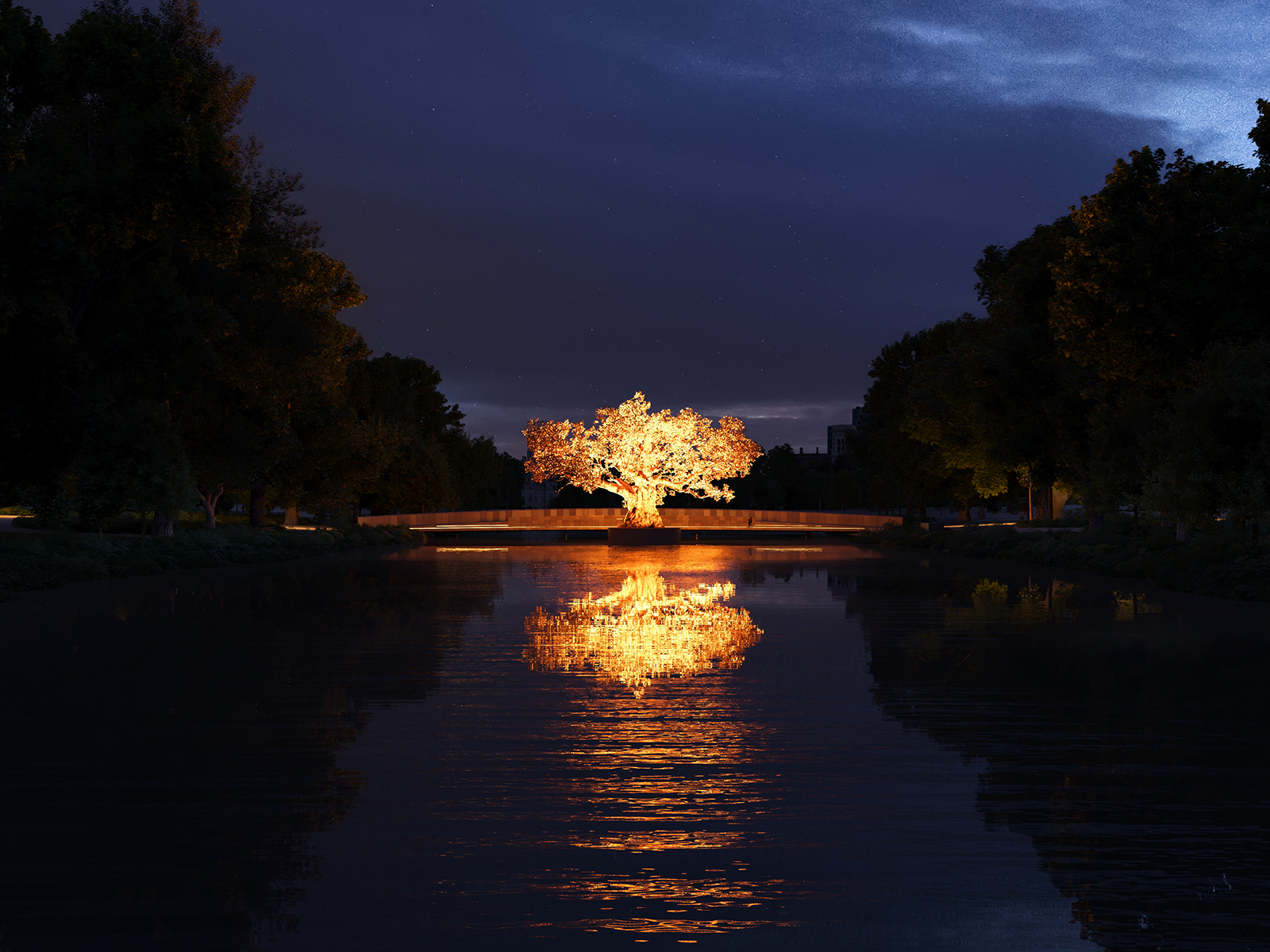
Tom Stuart-Smith National Monument design for Queen Elizabeth II
Another entrant, from Tom Stuart-Smith (with Jamie Fobert Architects, Adam Lowe (Factum Arte) and Structure Workshop) would have centred on an exact cast of the 900-year-old Signing Oak in Great Windsor Park, which would have been made to 'float' on a plinth in the lake, glimmering and majestic, connected to a path made of stones from all around Britain, ‘from Caithness to Cornwall’. This design also called for a new entrance on The Mall, a figurative sculpture of the Queen, and a ‘soundscape of memories’ playing authentic sounds of the Commonwealth.
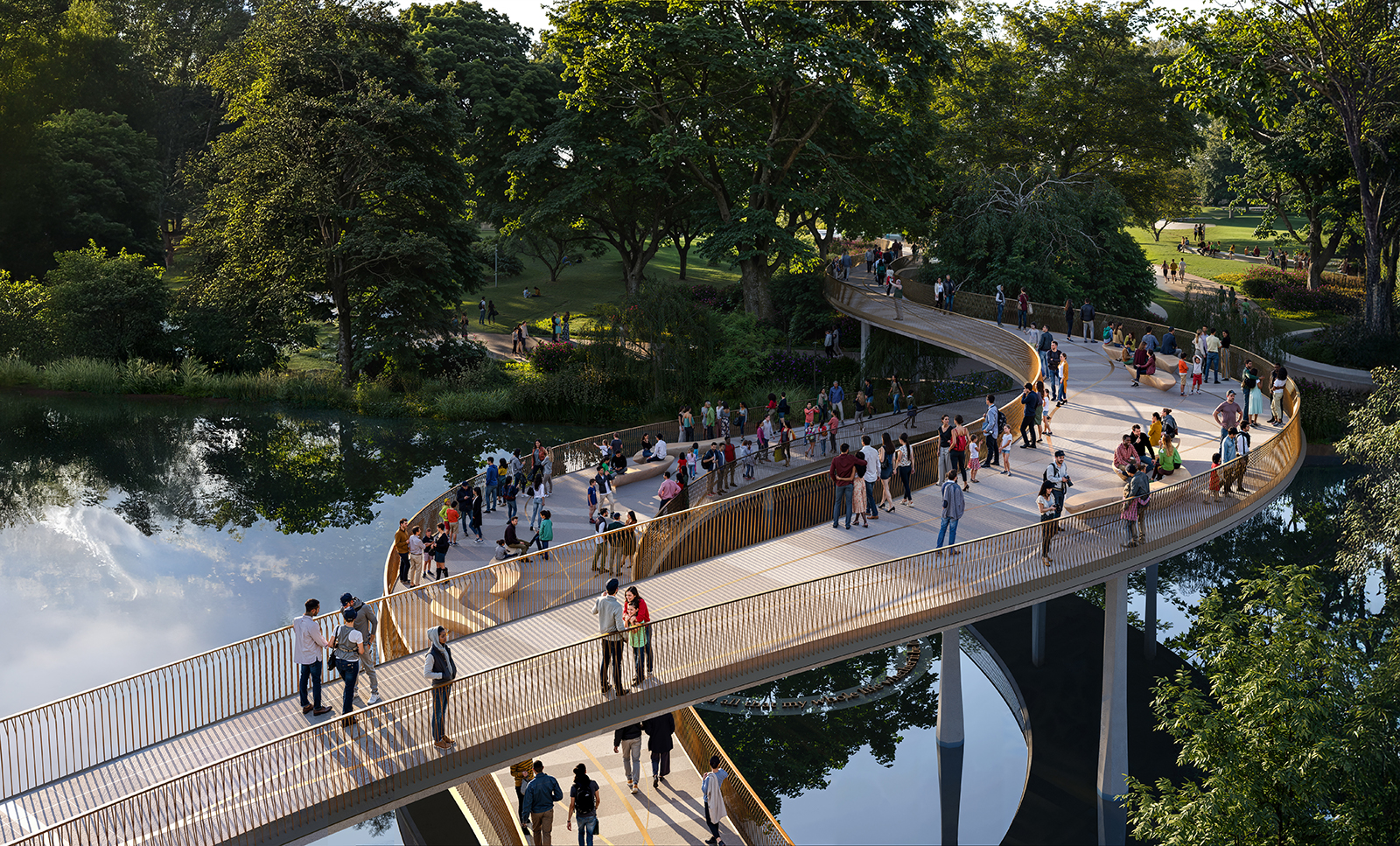
WilkinsonEyre National Monument design for Queen Elizabeth II
Wilkinson Eyre’s proposal (above; with Lisa Vandy and Fiona Clark, Andy Sturgeon Design, Atelier One and Hilson Moran), would have created ‘a thread of pathways and landscapes gently woven through the natural fabric of St James’s Park — its trees, lake, and terrain — creating a contemplative journey intened her seven decades of service’. Including a pair of bridges, the threads were designed to represent ‘defining themes of Her Majesty’s life: Reign, Faith, Commonwealth, Values, Nature, Family, and Prince Philip’.
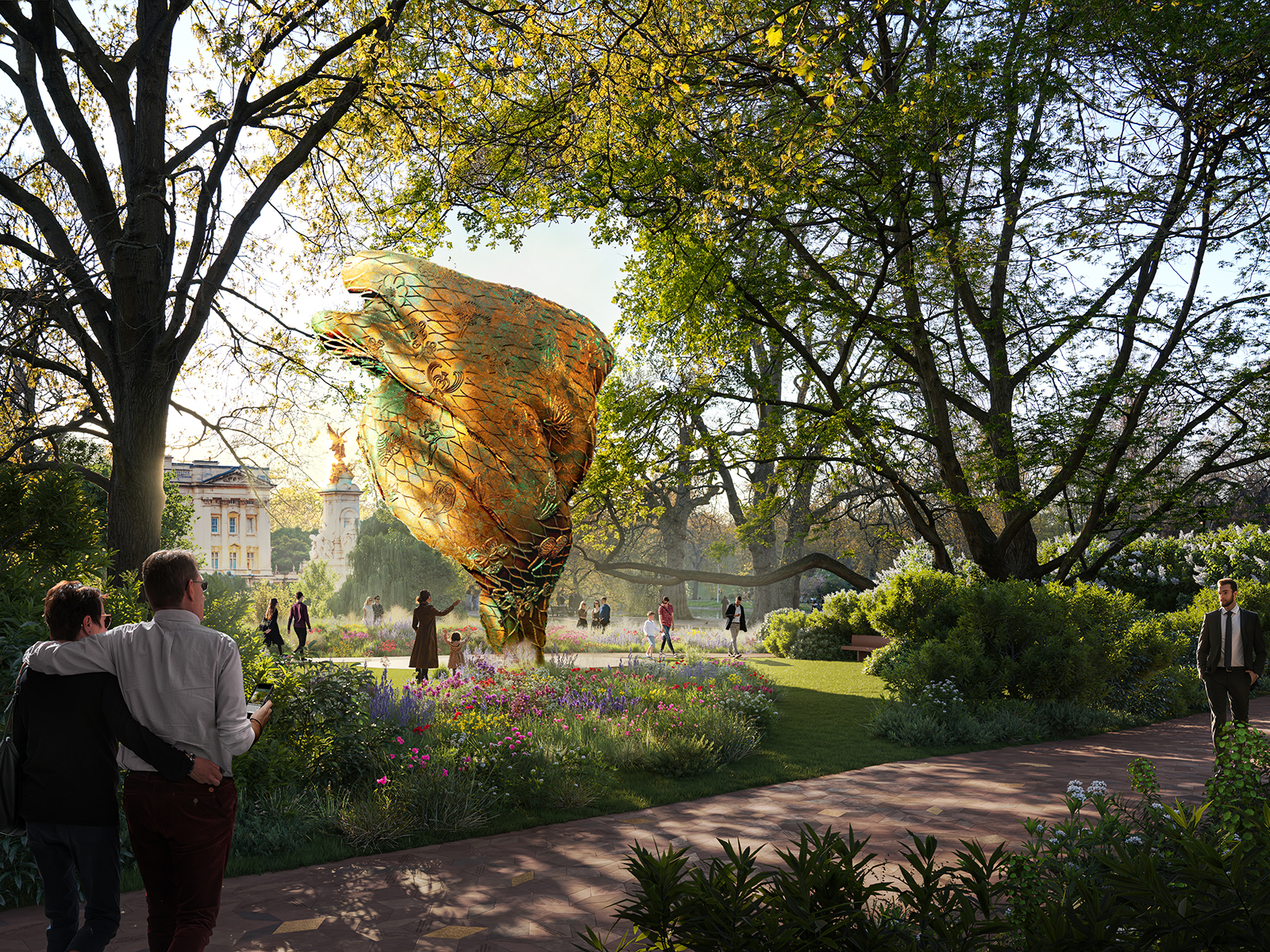
Foster+Partners National Monument design for Queen Elizabeth II
Lastly, J&L Gibbons wished to create ‘a meandering flow of geology carrying people through an ephemeral choreography of blossoming and colour beneath the high tree canopy’; it would have been a bridge ‘over soil, tree roots and water’ made from stone from the four nations and stretching from The Mall to Birdcage Walk, inspired by the ethos that the Queen was the nation’s bedrock. Various paths lead to places such as a Whispering Walk and Magnolia Glade.
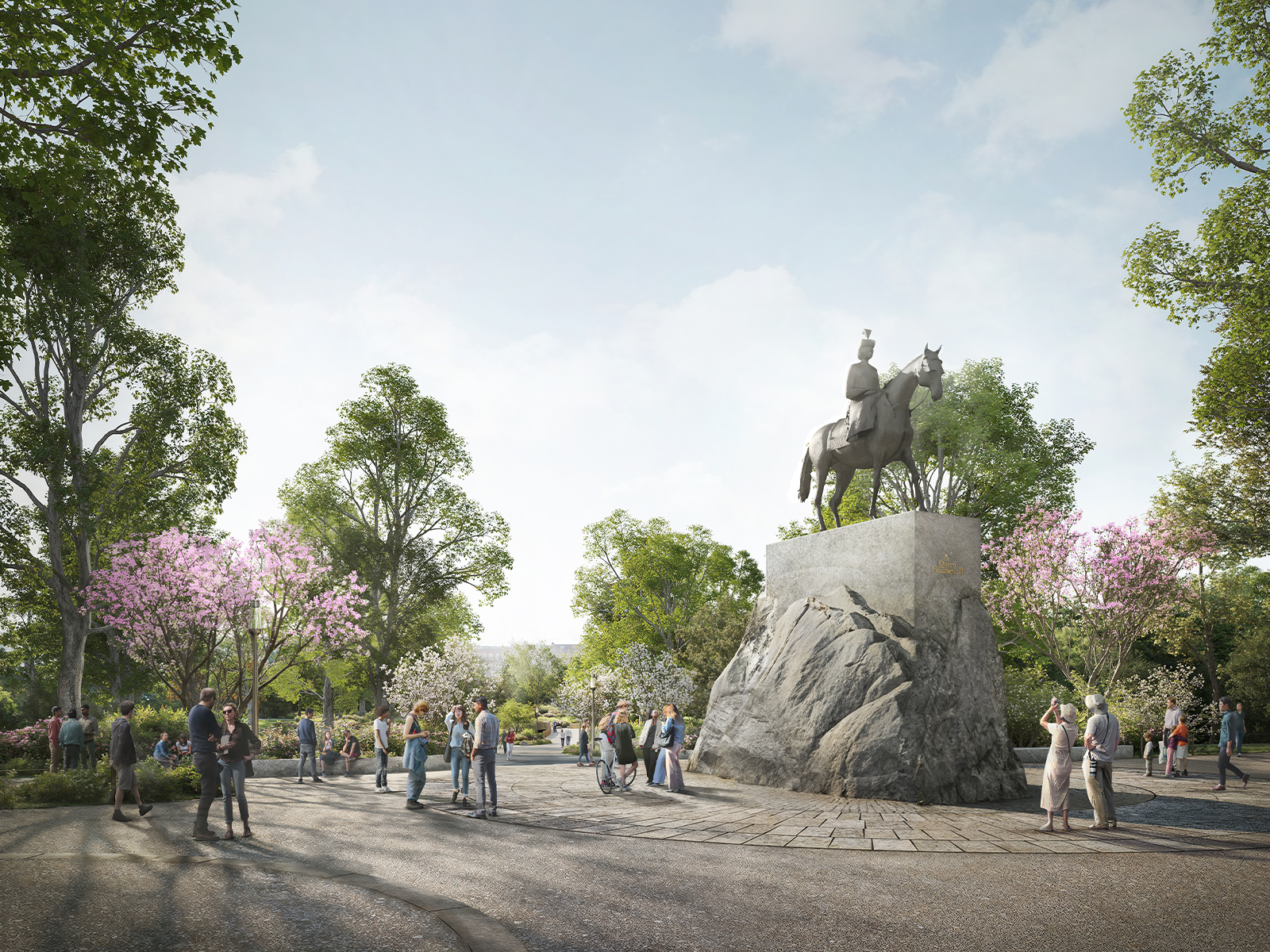
Creating a space for reflection was at the core of the design brief, but other factors, such as value for money, visitor experience and sensitivity to the original masterplan for the Grade I-listed park, are important. A separate search for a sculptor to work alongside the winner is ongoing.
Visit malcolmreading.com/queenelizabethmemorial/gallery for more information about the winner and all the entrants.
Annunciata is director of contemporary art gallery TIN MAN ART and an award-winning journalist specialising in art, culture and property. Previously, she was Country Life’s News & Property Editor. Before that, she worked at The Sunday Times Travel Magazine, researched for a historical biographer and co-founded a literary, art and music festival in Oxfordshire. Lancashire-born, she lives in Hampshire with a husband, two daughters and a mischievous pug.
-
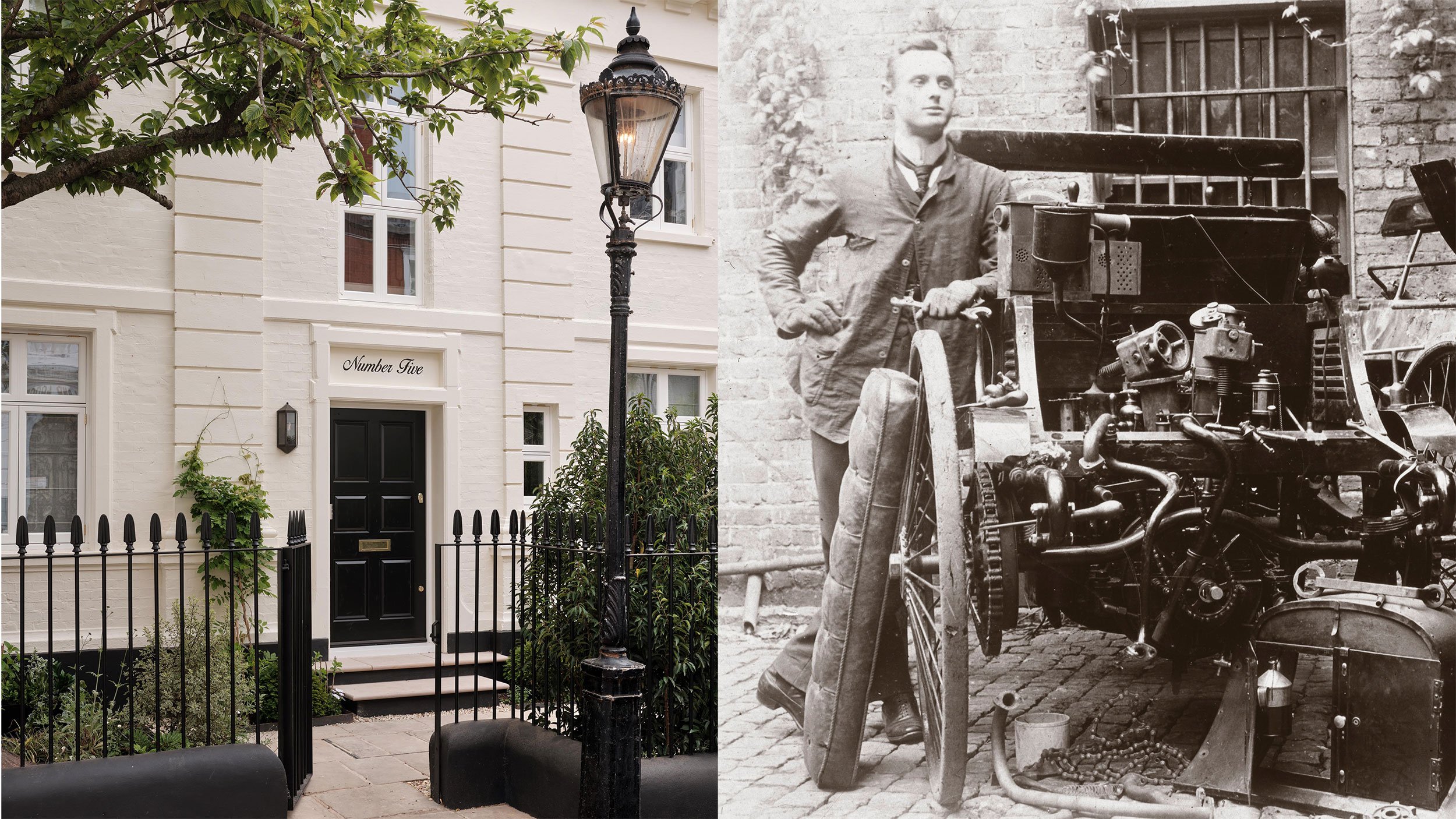 The London house where Rolls-Royce's co-founder Charles Rolls tinkered with his very first car is for sale at £17 million
The London house where Rolls-Royce's co-founder Charles Rolls tinkered with his very first car is for sale at £17 millionCharles Rolls, the engineer and co-founder of Rolls-Royce, got his hands dirty when using the stables of this fine London home as a makeshift garage. Annabel Dixon reports.
-
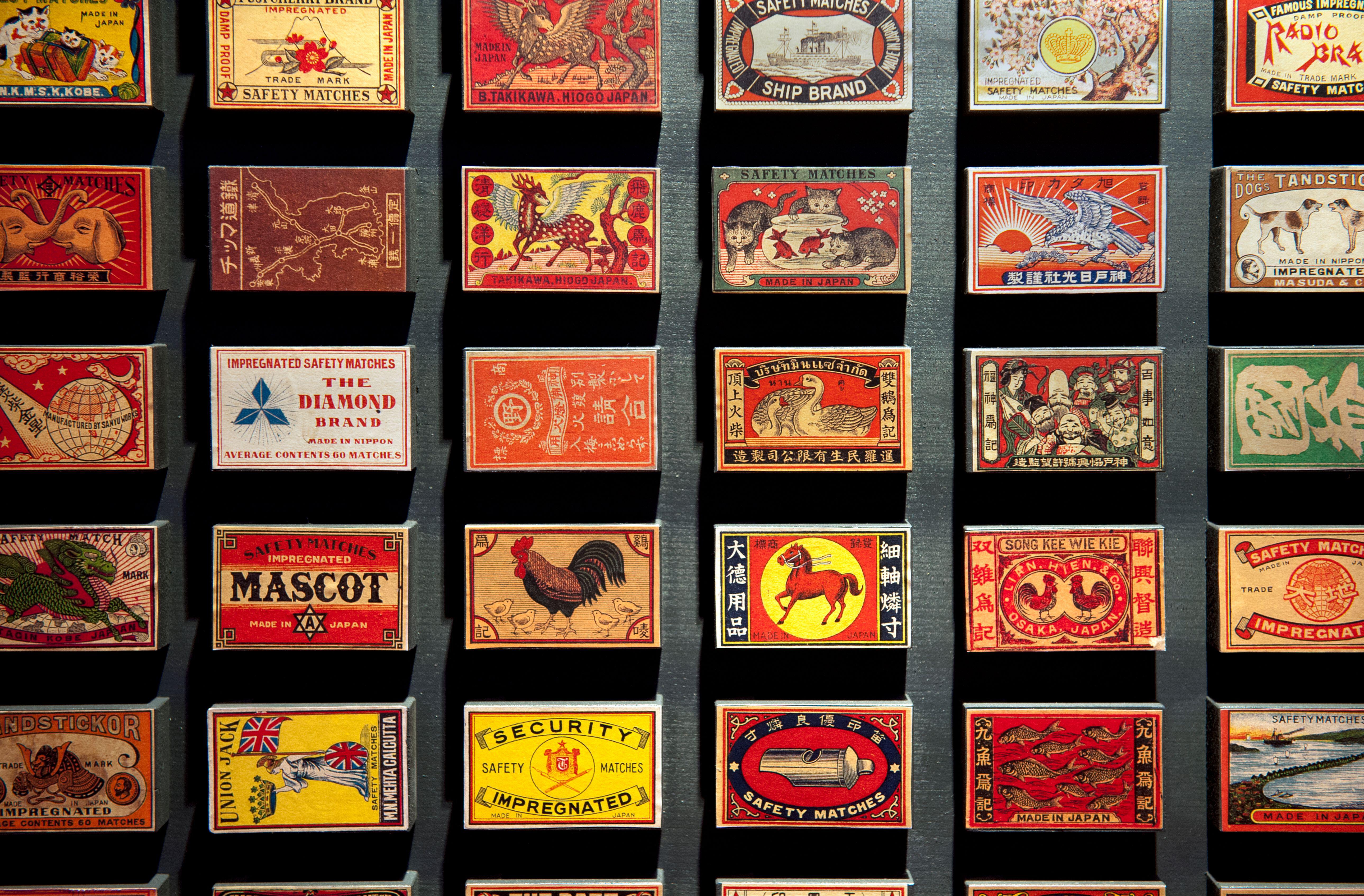 The sparkling history of the match and why its inventor never got the credit he deserved
The sparkling history of the match and why its inventor never got the credit he deservedWe’ve been using matches for 200 years–but, as Rob Crossan discovers, the story of how they came to be is far more colourful (and hair-raising) than we might imagine.
-
 Madonna, David Bowie, Elizabeth II and me — this is what it’s like to have your photograph taken by Rankin
Madonna, David Bowie, Elizabeth II and me — this is what it’s like to have your photograph taken by RankinThe world-renowned photographer has worked with everyone from acting royalty, to actual royalty. His next subject? Country Life’s wandering scribe, Lotte Brundle.
-
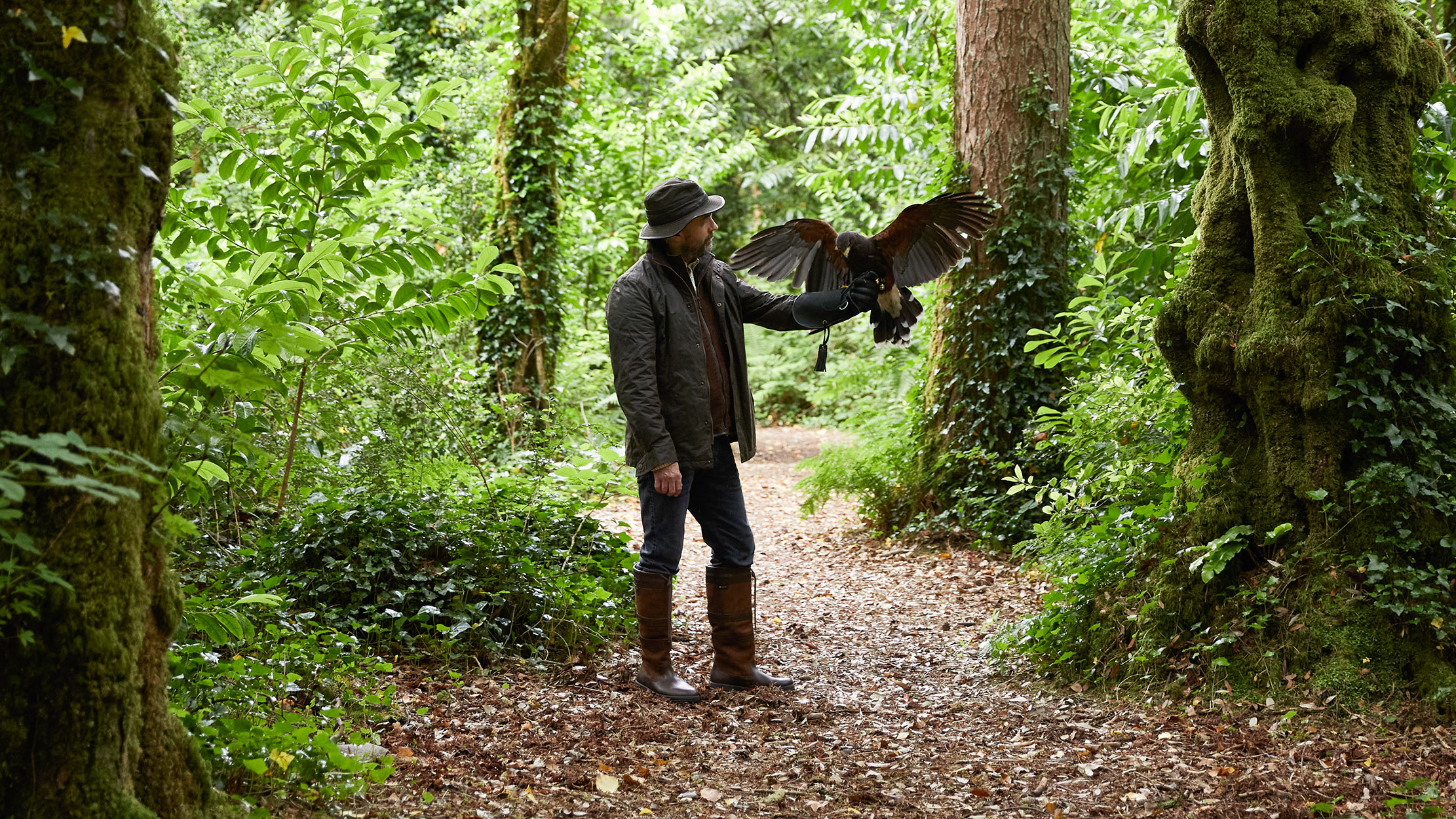 The Falconer's Tale: Tommy Durcan on how an ancient art lives on in 21st century Ireland
The Falconer's Tale: Tommy Durcan on how an ancient art lives on in 21st century IrelandTommy Durcan of Ireland's School of Falcony joins the Country Life podcast.
-
 ‘She was absolutely extraordinary. One of my favourite things, photographing her, was the power that came through the door’: Rankin on capturing Elizabeth II, embracing artificial intelligence and almost becoming an accountant
‘She was absolutely extraordinary. One of my favourite things, photographing her, was the power that came through the door’: Rankin on capturing Elizabeth II, embracing artificial intelligence and almost becoming an accountantThe world-renowned photographer tells Lotte Brundle about his most memorable meal, with Liam Gallagher, Patsy Kensit, Elvis Costello and the bass player in The Pogues — along with the rest of his consuming passions.
-
 'People always think that, working on The Telegraph, I'll be told that things aren't right wing enough. But in 37 years, I've never, ever been told that’: The Telegraph’s cartoonist Matt on his consuming passions
'People always think that, working on The Telegraph, I'll be told that things aren't right wing enough. But in 37 years, I've never, ever been told that’: The Telegraph’s cartoonist Matt on his consuming passionsThe Daily Telegraph cartoonist Matt — AKA Matthew Pritchett — talks to Lotte Brundle about his career as a cartoonist, his love of Snoopy and how he ‘stole’ his wife from Laurence Llewellyn-Bowen.
-
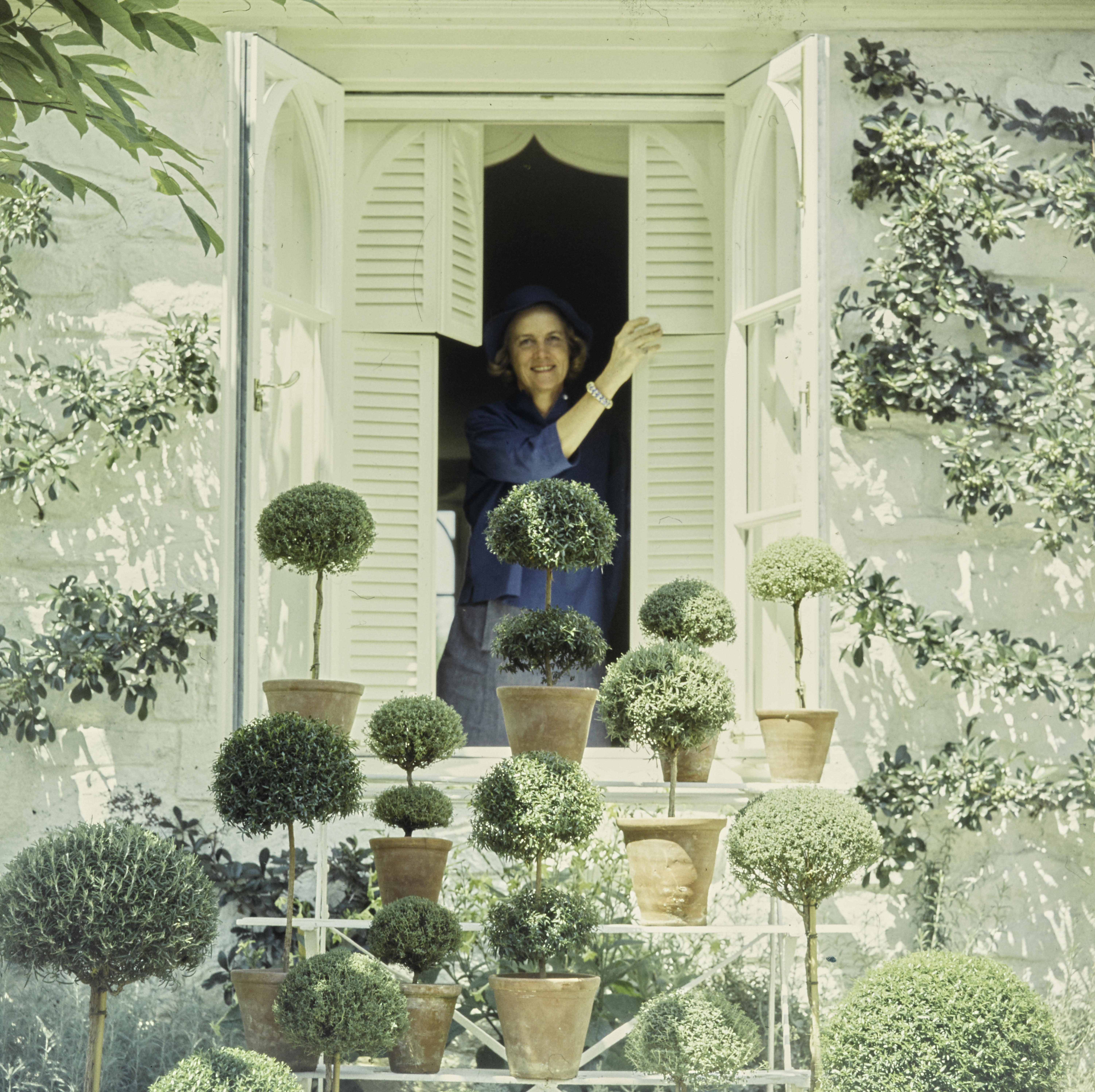 Bunny Mellon: The Truman Capote ‘Swan’, muse and horticulturalist whose creations for The White House were recently lost forever
Bunny Mellon: The Truman Capote ‘Swan’, muse and horticulturalist whose creations for The White House were recently lost foreverAs Tiffany & Co. pay homage to Bunny Mellon with a new Bird on a Rock collection, Owen Holmes takes a look at the most iconic garden designs of this heiress-horticulturist, from her Virginia estate to the White House to Versailles.
-
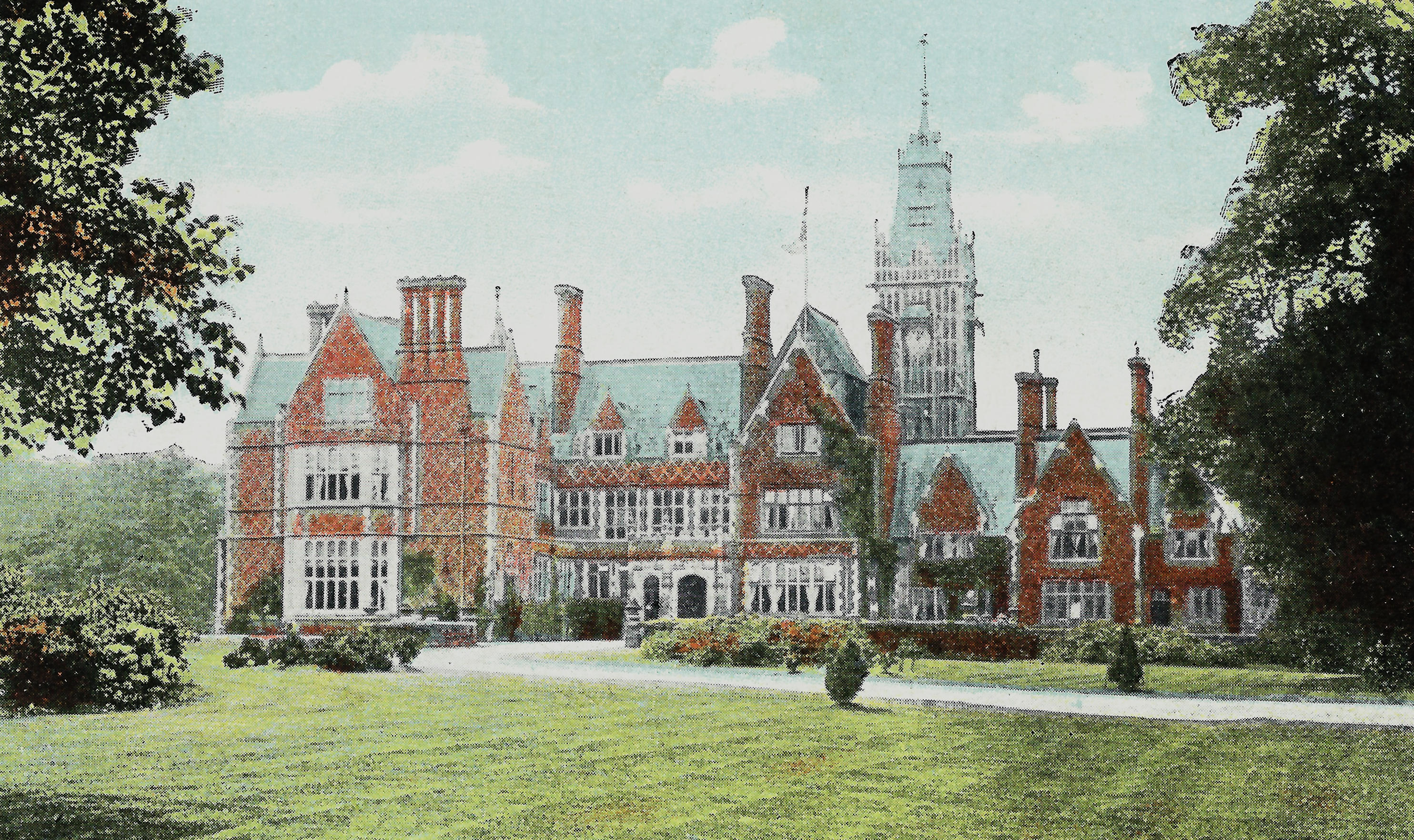 'Never has there been a more important time to publicise great Victorian and Edwardian buildings in peril': The importance of saving our historic buildings
'Never has there been a more important time to publicise great Victorian and Edwardian buildings in peril': The importance of saving our historic buildingsFor the 16th year, the Victorian Society is calling on the public to nominate Victorian or Edwardian buildings in England and Wales that are in need of saving.
-
 'These days, they have almost nothing to do with Advent and quite a lot to do with bath oil and mini bottles of perfume': A snob’s guide to advent calendars
'These days, they have almost nothing to do with Advent and quite a lot to do with bath oil and mini bottles of perfume': A snob’s guide to advent calendarsSophia Money-Coutts questions whether advent calendars have gone too far.
-
 Amelia Thomas: The woman who learned to talk to animals
Amelia Thomas: The woman who learned to talk to animalsAmelia Thomas, the real-life Dr Dolittle who spent years decoding how animals talk, joins James Fisher on the Country Life podcast.
